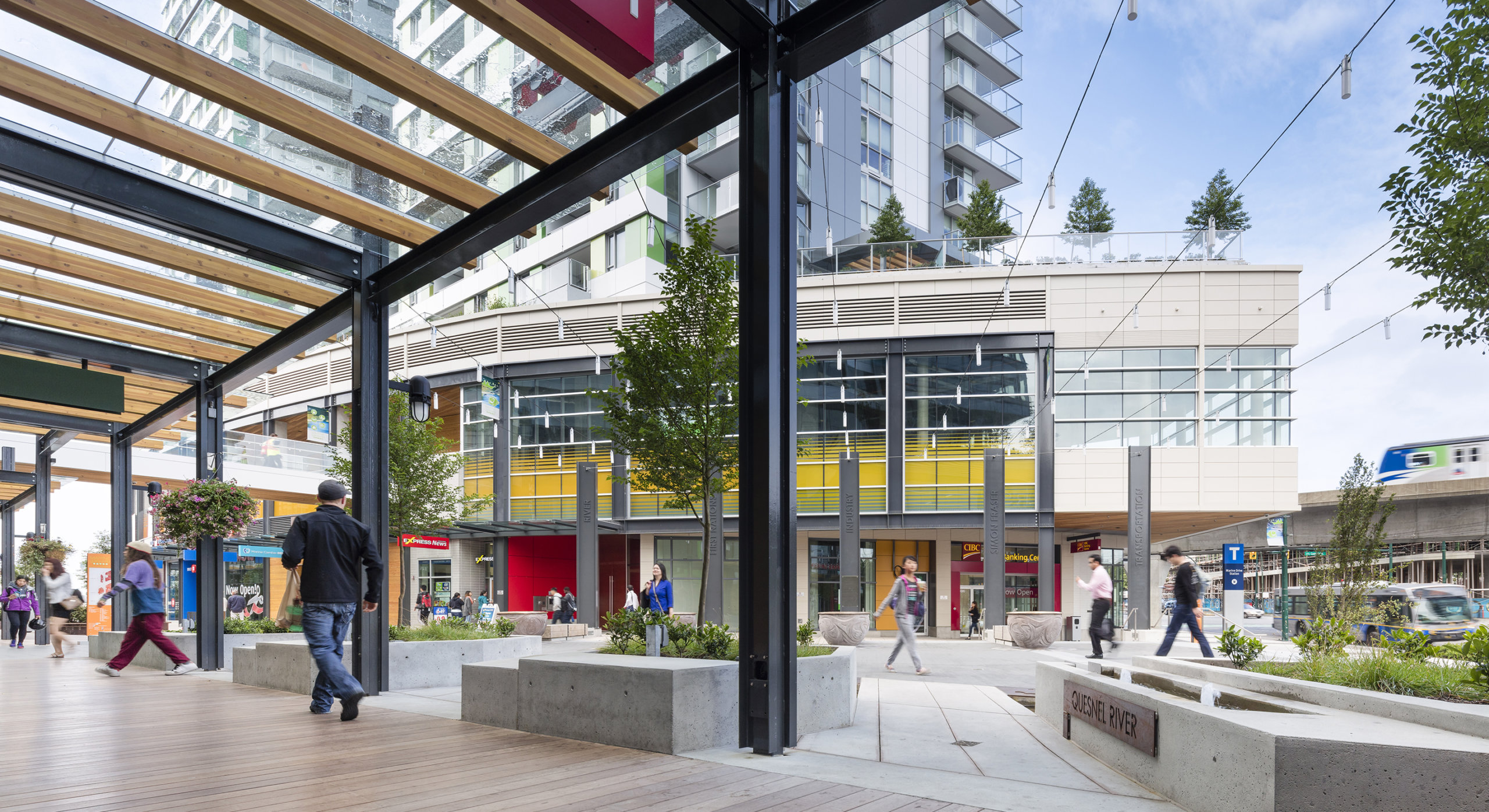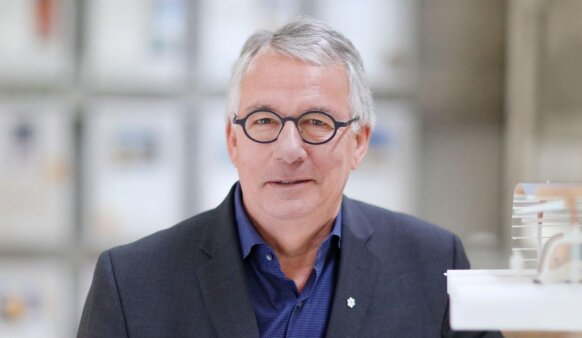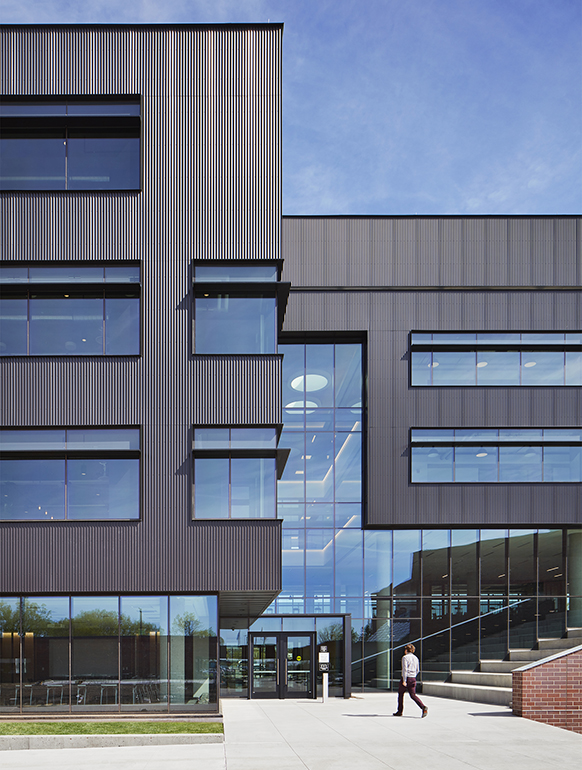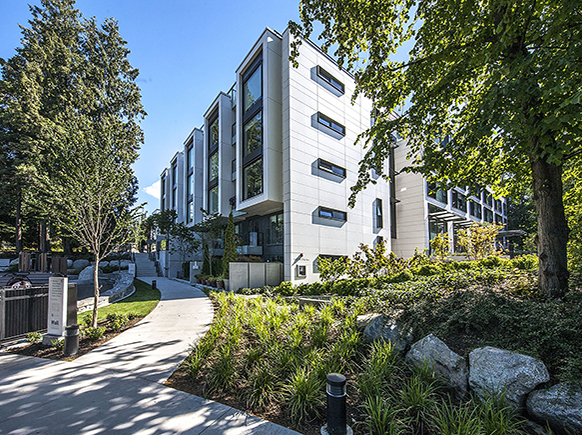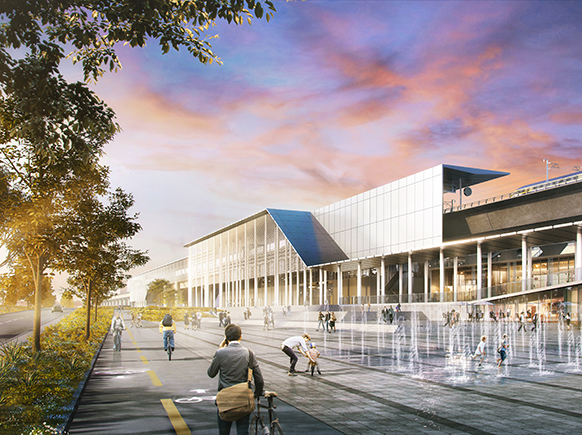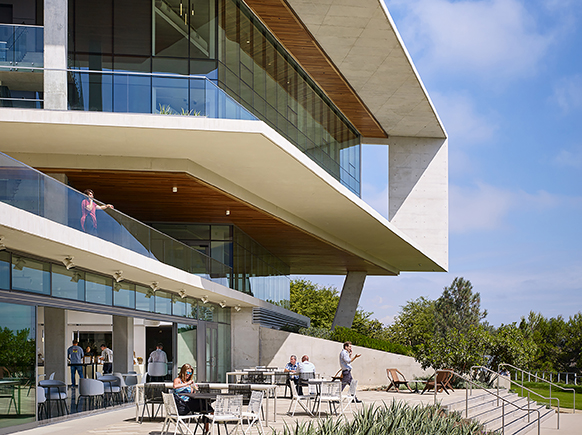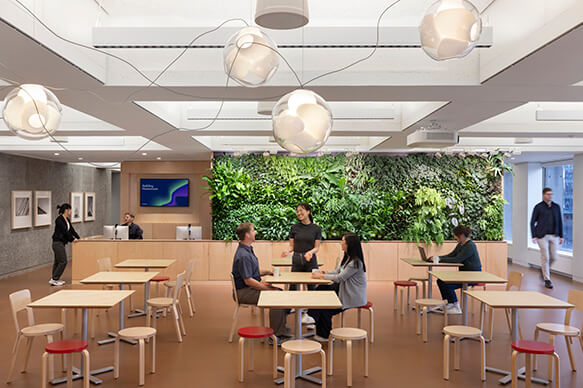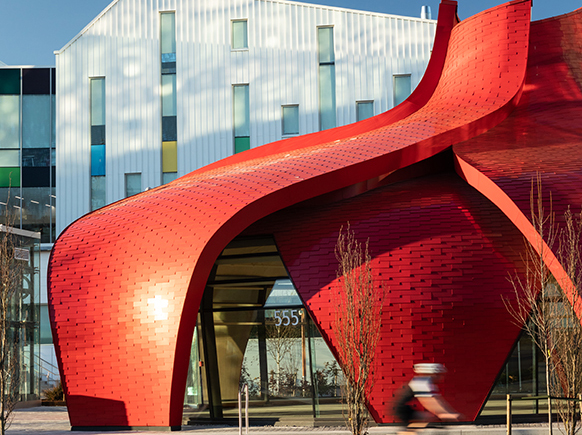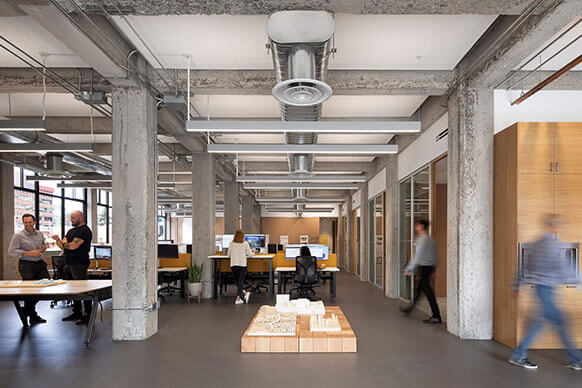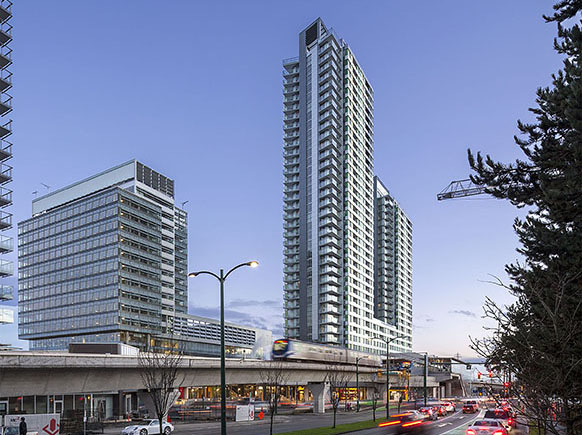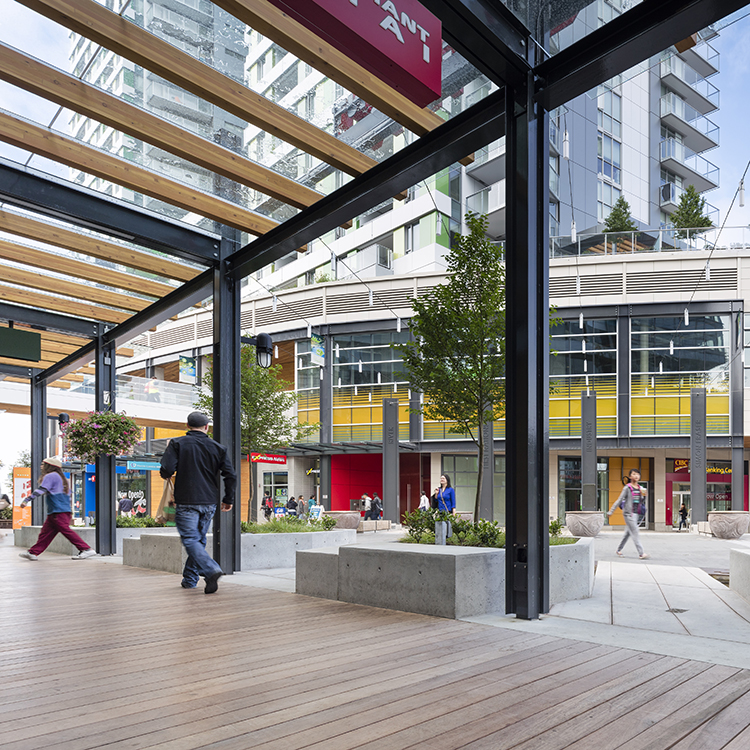
Marine Gateway
“How do you create a community?” This was the question from PCI Development Group when they asked us to help them develop a site in South Vancouver, set among single-family houses, industrial uses, and major arterial roads.
The key to unlocking the site’s potential was leveraging a planned stop along Metro Vancouver’s new Canada Line LRT system. For over a decade, we worked closely with PCI, the City of Vancouver, Translink, and the residents of the surrounding neighbourhood to realize the transformational potential of the site. Today—through a carefully considered mix of uses, a high-quality public realm, and a deep integration of multi-modal transportation options—Marine Gateway is not only the heart of a new community, but also a global showcase of transit oriented development.
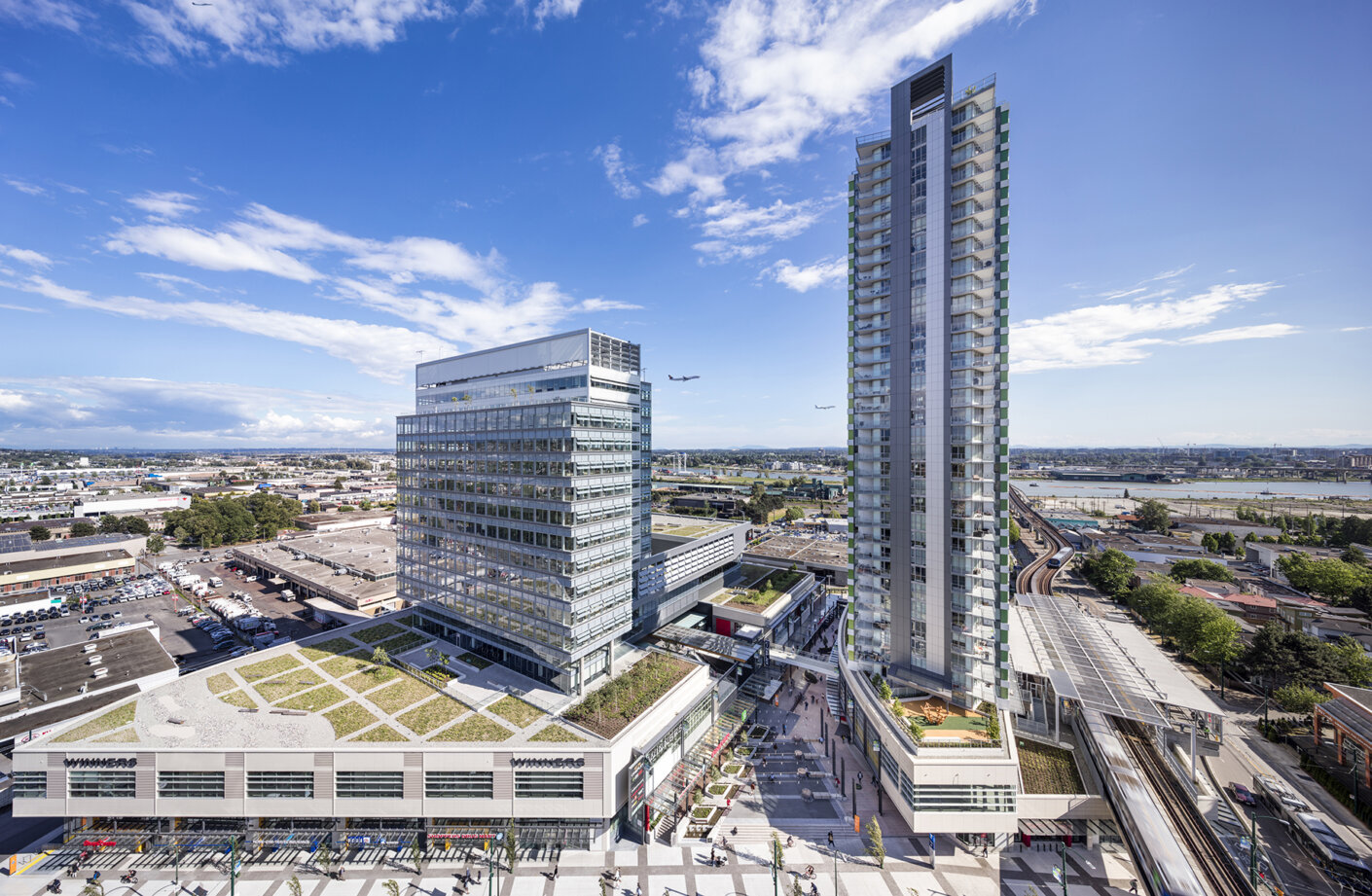
Leveraging the integration of multiple transit options and offering a draw for the surrounding neighbourhood, Marine Gateway includes a complementary mix of programs: two neighbourhood plazas, 15-storeys of office space, a 3-storey retail podium, an 11-screen cinema, and two residential towers at 25 and 35-storeys.
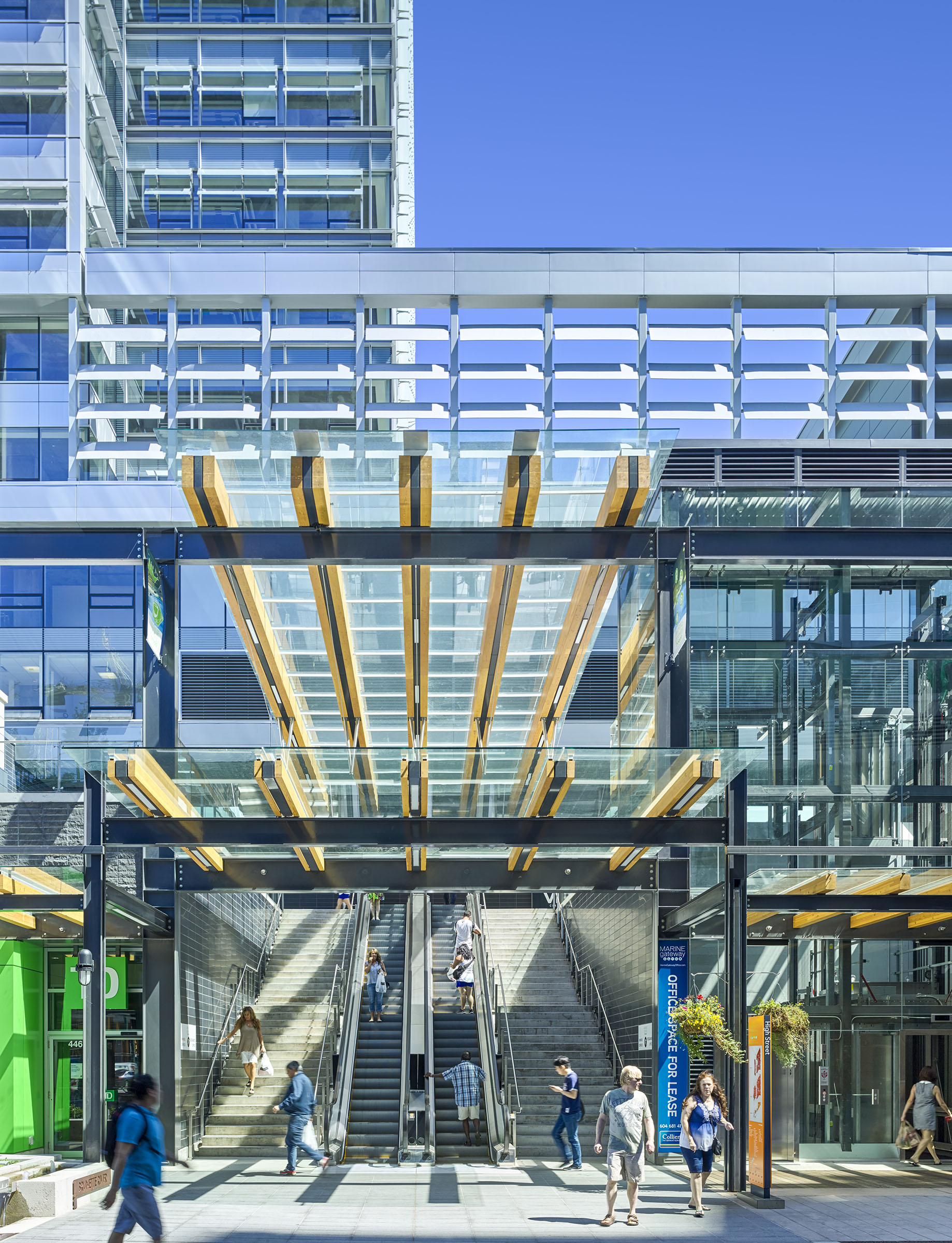
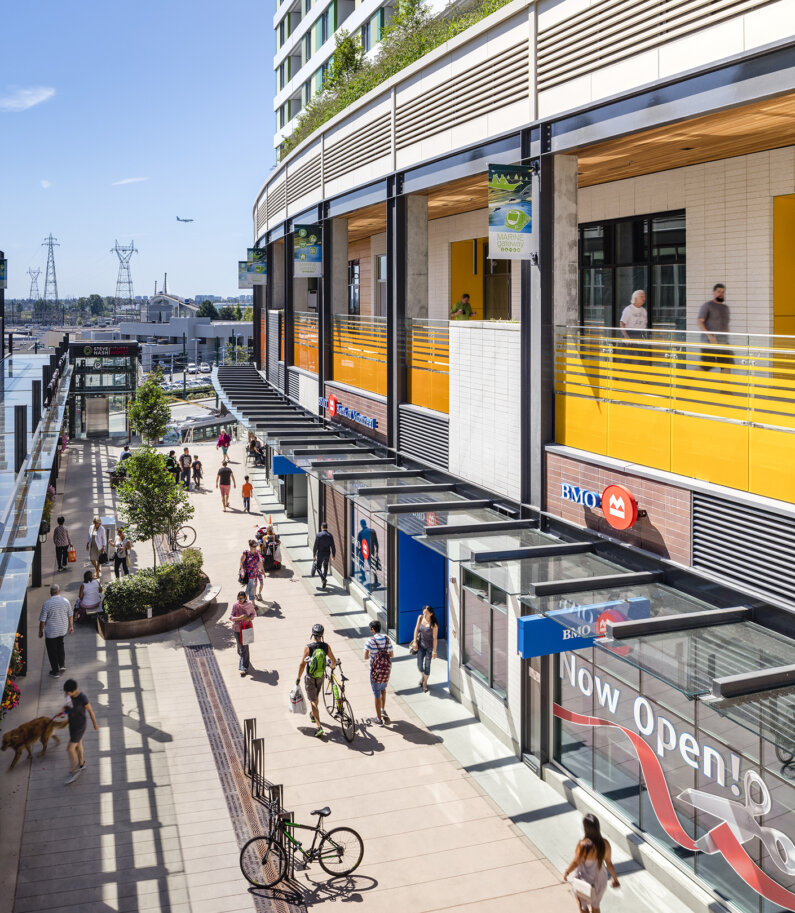
We incorporated a holistic sustainable design strategy that includes a district energy geoexchange heating and cooling system with an ambient heat recovery energy loop, building siting that capitalizes on passive solar exposure, and sun shading devices that prevent against heat gain. Complemented by a high-performance building envelope and low glazing ratios, the result is a project 37% more efficient than the new Vancouver Zero Emissions Plan for New Building targets. In addition, extremely low parking ratios, shared parking strategies, car share, electric vehicle charging, bike share, and end of trip facilities create an environment for a strong social sustainability project.

Kevin Desmond, Former Translink CEO
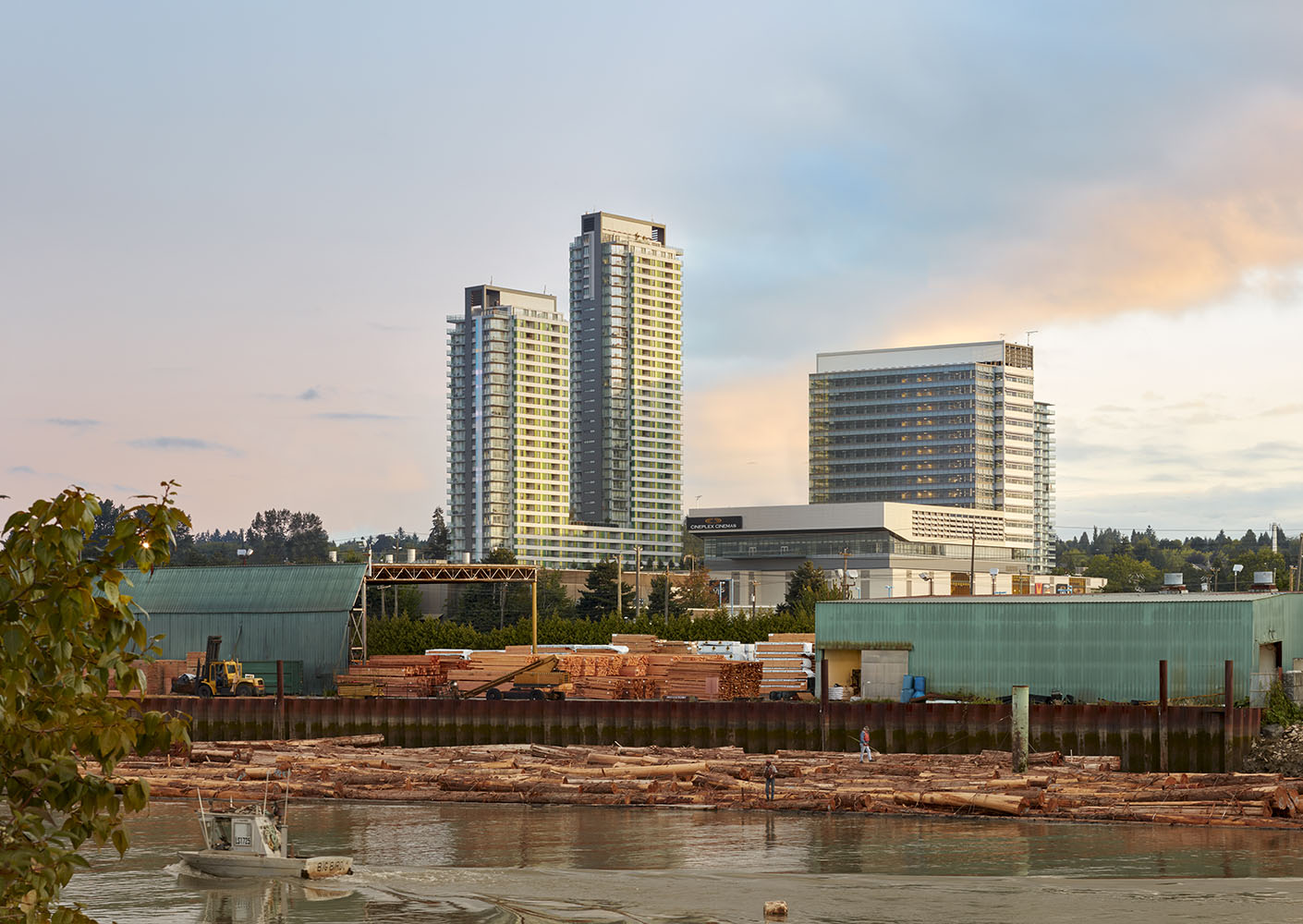
Sited on formerly industrial land, the project fully develops the site and introduces active stormwater control and extensive green roofs. We purposefully designed the landscaped roofs—complete with logs harvested from the existing site—to reintroduce habitat for birds and bugs.
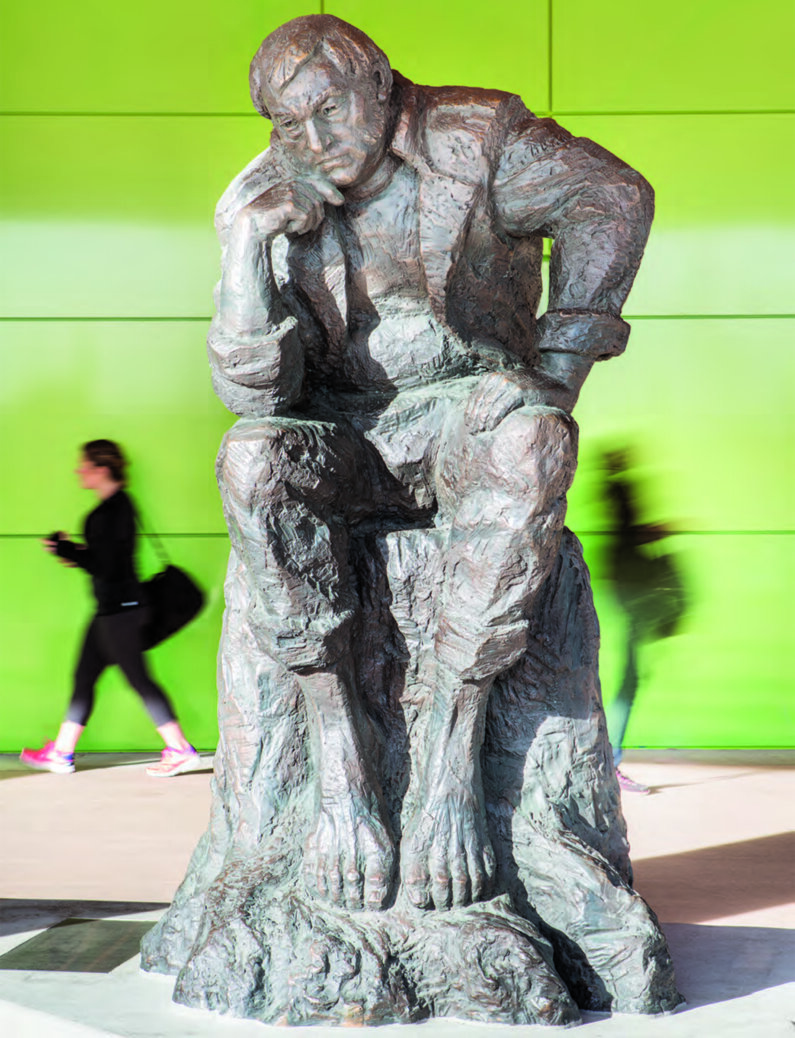
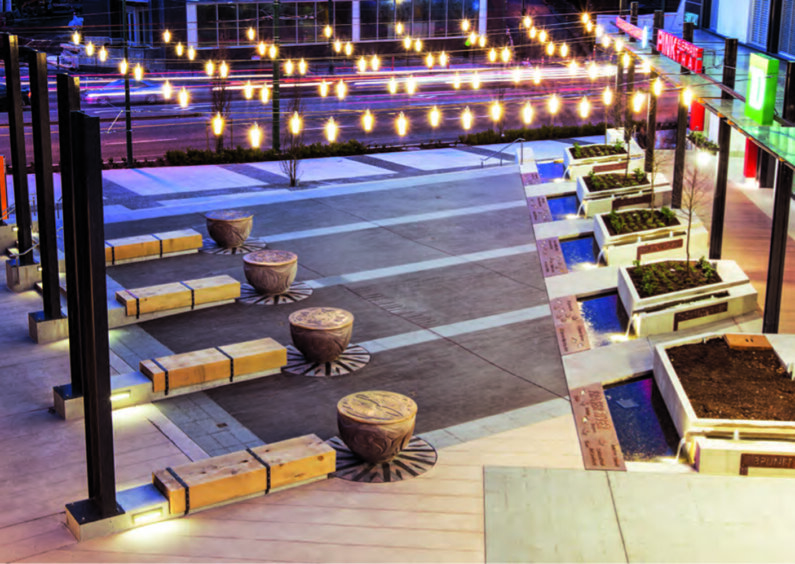
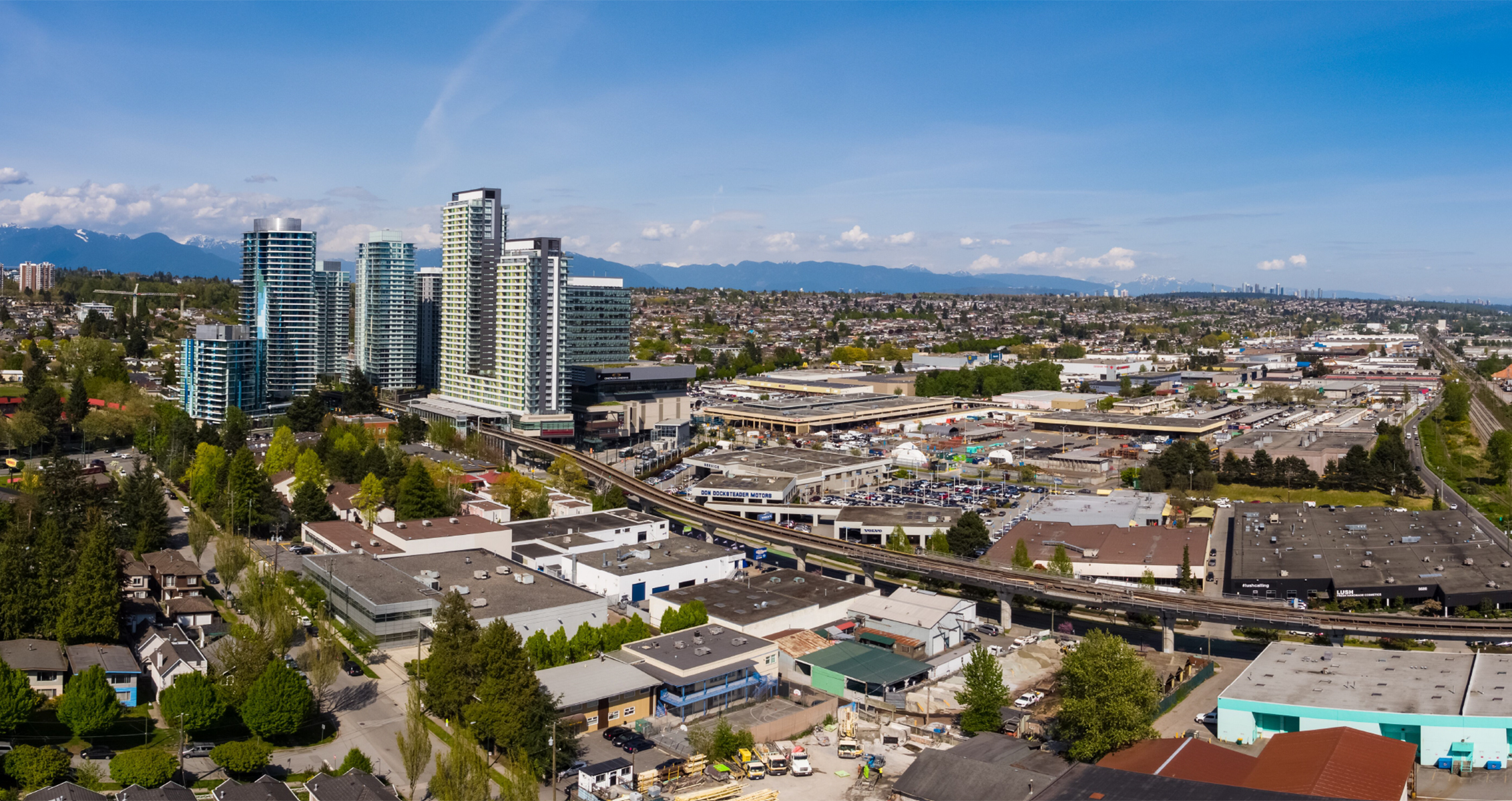
At the inception of the project, we conducted a comprehensive evaluation of the City of Vancouver’s EcoDensity initiative—which examined ways that Vancouver can accommodate its projected growth, maintain its reputation for livability, and encourage affordability. We focused on development along the Canada Line and laid out a vision where Vancouver, by implementing a nodal EcoDensity, can reduce the city’s GHG emissions dramatically enough to help mitigate the effects of global warming. Marine Gateway is the first large-scale development that serves as an example of sustainable, nodal development along Vancouver’s new transit corridor.
